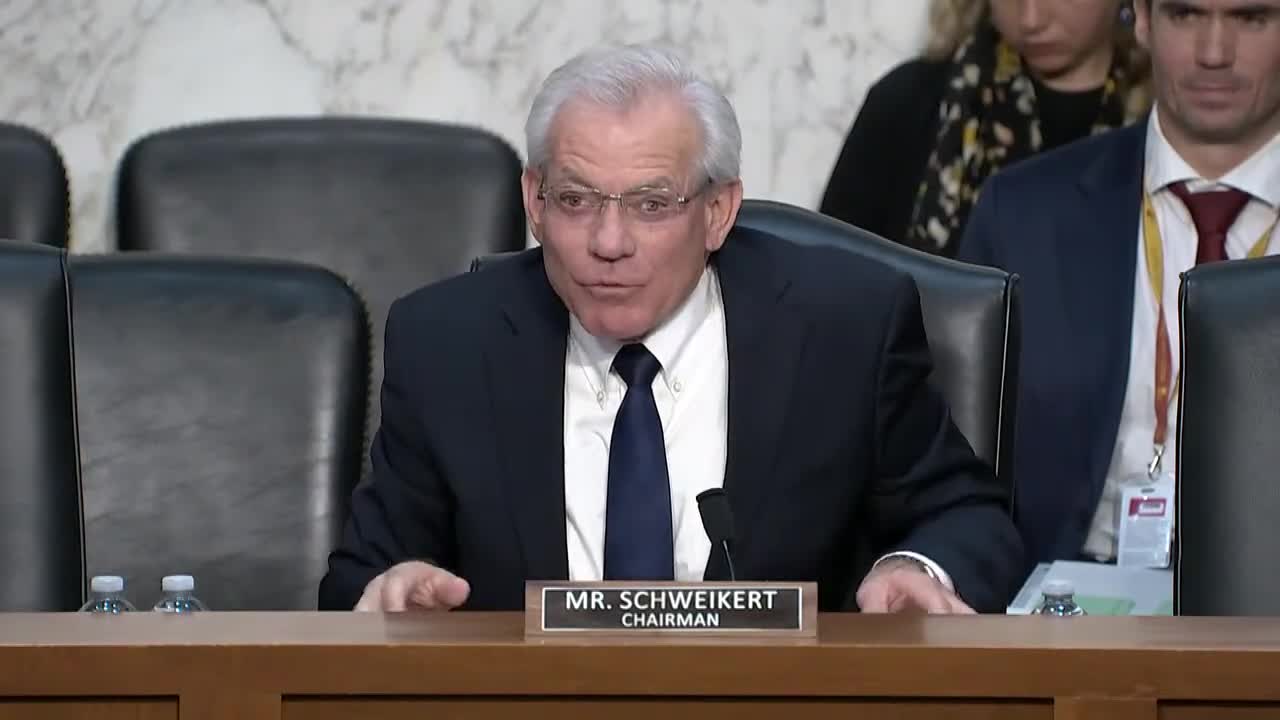Chairman frames hearing as a choice: AI and quantum could lift productivity or upend work
November 19, 2025 | Joint Economic Committee, Joint Committees, Congressional Hearings Compilation

This article was created by AI summarizing key points discussed. AI makes mistakes, so for full details and context, please refer to the video of the full meeting. Please report any errors so we can fix them. Report an error »

The chairman opened the session by warning that U.S. demographic trends — fewer 18‑year‑olds and roughly double the number of older adults compared with 20 years ago — create an urgent policy choice: harness automation to raise productivity or risk disruptive job losses.
He told panelists he favored more federal investment in quantum research than was provided through the CHIPS Act and asked witnesses to explain where quantum and AI stand today. ‘‘Are we on the cusp of a productivity miracle that allows our brothers and sisters to live better, or are we on the cusp of dystopianism where the jobs that exist disappear?’’ the chairman said.
An INQ representative told the committee the company has achieved ‘‘four nines’’ of qubit fidelity — 99.99% — and described quantum computing as ‘‘inflecting’’ in the mid‑2020s. The witness said hybrid workflows combining classical AI and quantum processors are already reducing some long-running computational problems from months to days through partnerships with firms including NVIDIA and cloud providers.
Panelists acknowledged risks. Witnesses and the chairman highlighted two technical problems that are especially consequential for medical applications: model ‘‘hallucinations’’ that produce inaccurate outputs, and low‑quality or fraudulent academic papers that may be mined into training datasets.
Speakers urged targeted policy reviews rather than blanket bans. One witness said courts, laws and regulatory bodies must provide safeguards, but cautioned that over‑regulation could slow technologies that might, for example, accelerate drug discovery or ease labor shortages in caregiving.
The chairman closed by asking panelists to submit written answers to follow‑up questions that will be entered into the hearing record.
The hearing concluded with a request for further information rather than a formal policy decision; a number of witnesses described near‑term use cases while flagging supply‑chain and regulatory steps needed to scale them.
He told panelists he favored more federal investment in quantum research than was provided through the CHIPS Act and asked witnesses to explain where quantum and AI stand today. ‘‘Are we on the cusp of a productivity miracle that allows our brothers and sisters to live better, or are we on the cusp of dystopianism where the jobs that exist disappear?’’ the chairman said.
An INQ representative told the committee the company has achieved ‘‘four nines’’ of qubit fidelity — 99.99% — and described quantum computing as ‘‘inflecting’’ in the mid‑2020s. The witness said hybrid workflows combining classical AI and quantum processors are already reducing some long-running computational problems from months to days through partnerships with firms including NVIDIA and cloud providers.
Panelists acknowledged risks. Witnesses and the chairman highlighted two technical problems that are especially consequential for medical applications: model ‘‘hallucinations’’ that produce inaccurate outputs, and low‑quality or fraudulent academic papers that may be mined into training datasets.
Speakers urged targeted policy reviews rather than blanket bans. One witness said courts, laws and regulatory bodies must provide safeguards, but cautioned that over‑regulation could slow technologies that might, for example, accelerate drug discovery or ease labor shortages in caregiving.
The chairman closed by asking panelists to submit written answers to follow‑up questions that will be entered into the hearing record.
The hearing concluded with a request for further information rather than a formal policy decision; a number of witnesses described near‑term use cases while flagging supply‑chain and regulatory steps needed to scale them.
View full meeting
This article is based on a recent meeting—watch the full video and explore the complete transcript for deeper insights into the discussion.
View full meeting